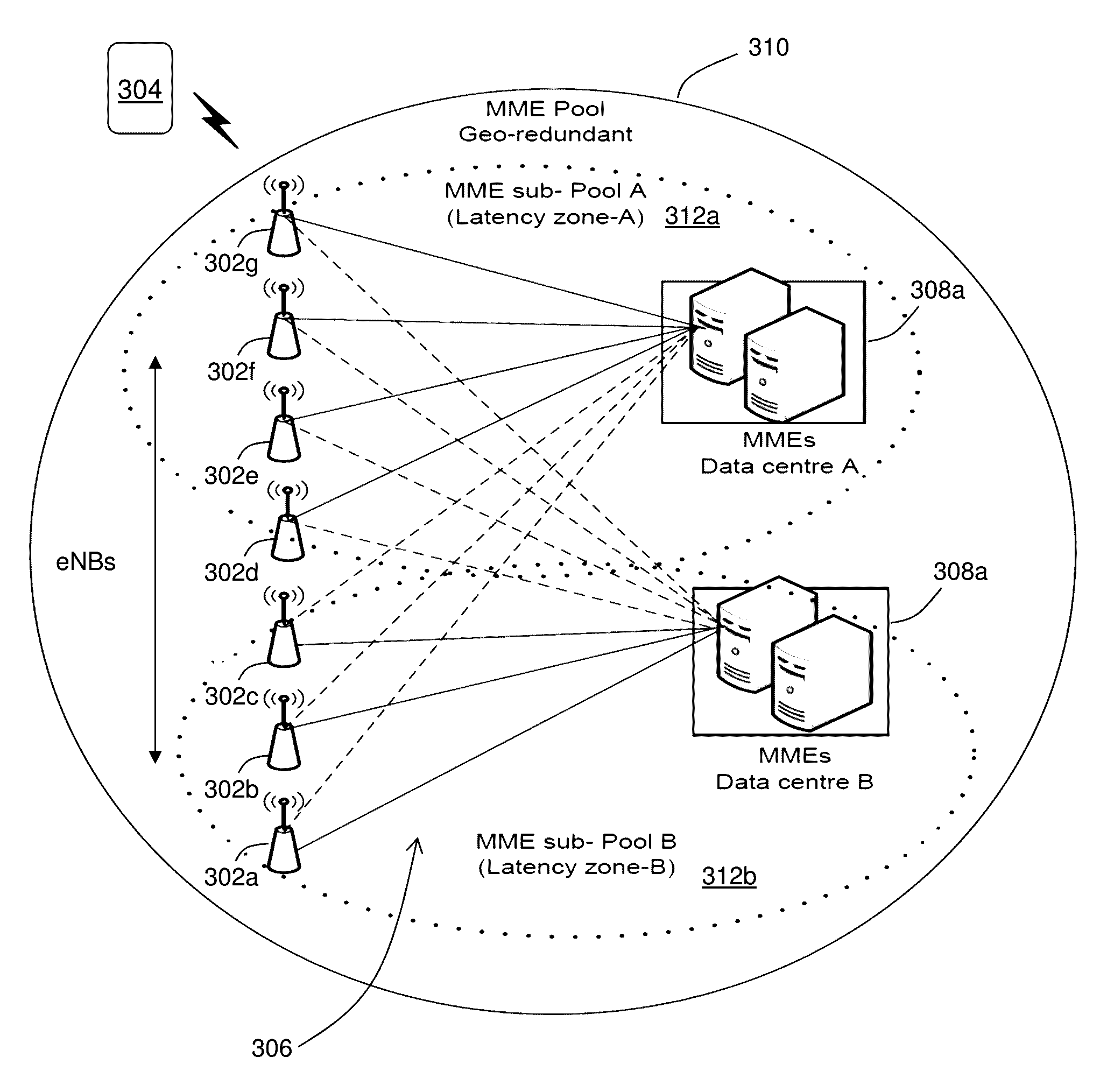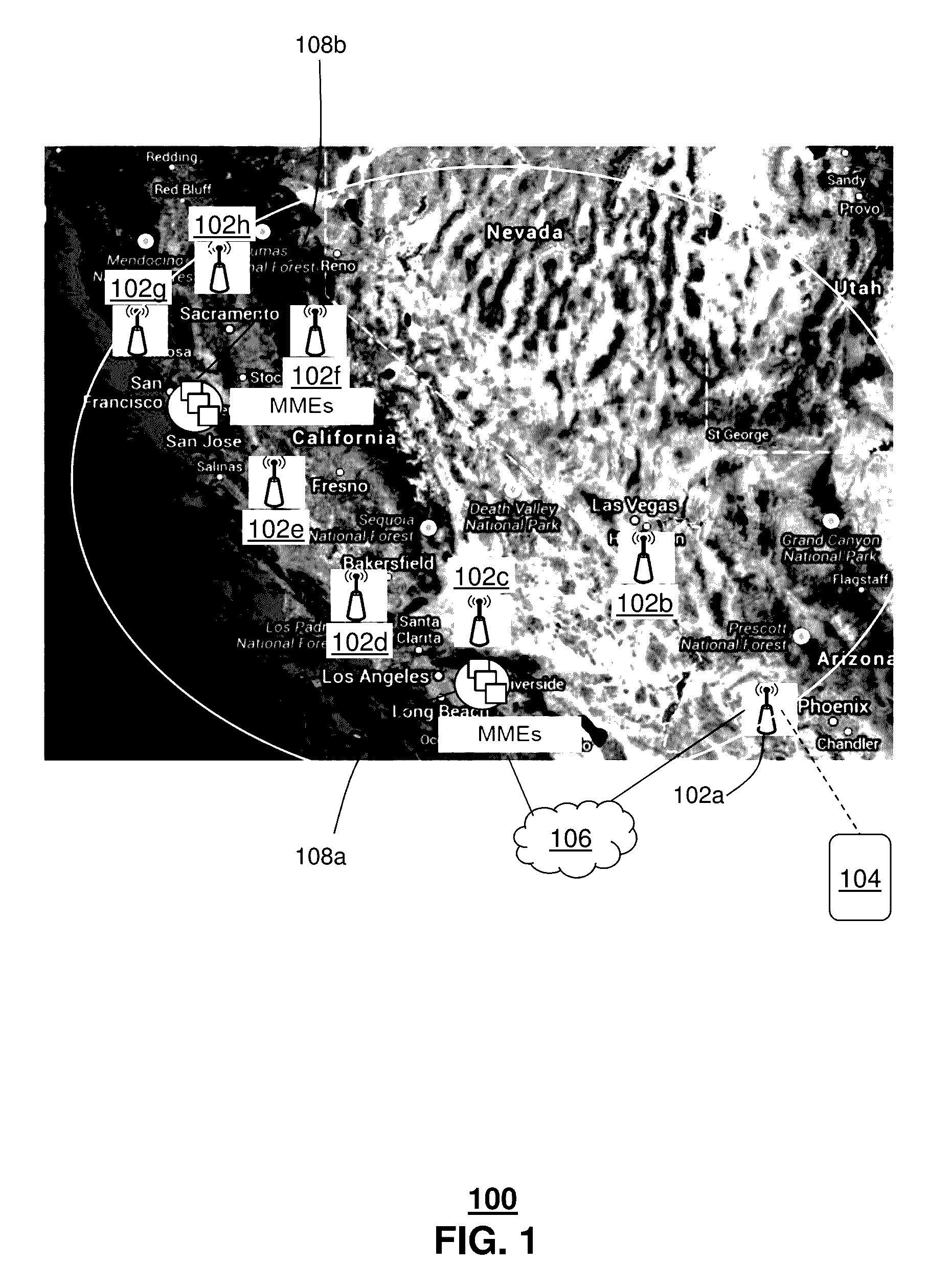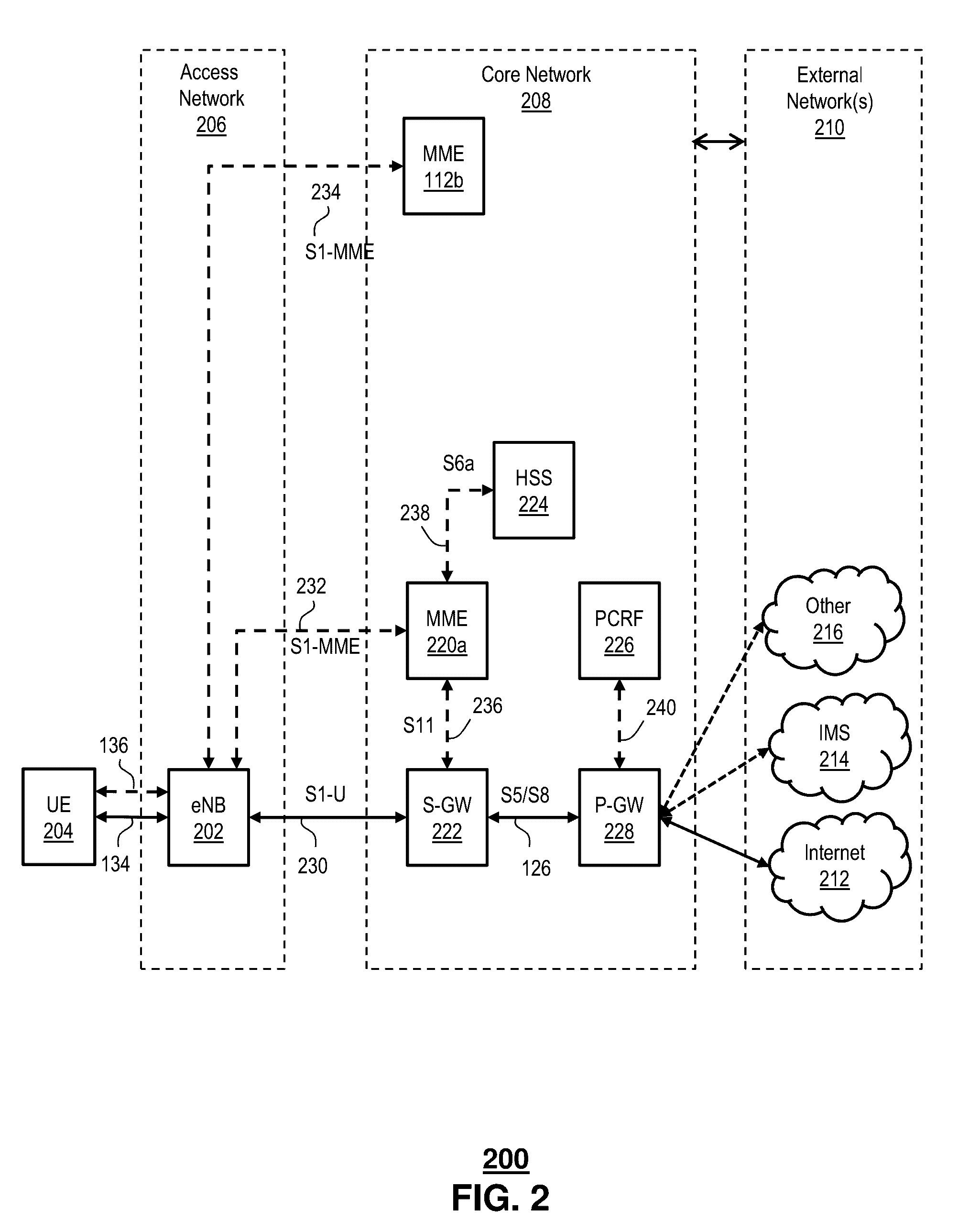Proximity based sub-pooling of network devices in mobile wireless networks
a network device and mobile wireless technology, applied in the direction of wireless network protocols, network traffic/resource management, electrical equipment, etc., can solve the problems of additional transport layer latency, unequal distribution of mme subscriber load across the mmes in the pool,
- Summary
- Abstract
- Description
- Claims
- Application Information
AI Technical Summary
Benefits of technology
Problems solved by technology
Method used
Image
Examples
Embodiment Construction
[0013]The subject disclosure describes, among other things, illustrative embodiments for selecting wireless core network nodes, such as MMEs, to facilitate end-to-end communications. In one or more embodiments, the network node, e.g., MME selection can be a proximity-based selection process. In one or more embodiments, the proximity-based selection process for the network nodes, e.g., MMEs can be based on timing parameters, such as round trip delays or times during an S1 setup (e.g., Stream Control Transmission Protocol (SCTP) signaling Smooth Round Trip Time (SRTT)). The same proximity-selection process concept can be extended to select other wireless core nodes, e.g., SGW, PGW, HSS, GMLC, MTC-IWF, etc.
[0014]In one or more embodiments, methods and systems can determine transport latency in a backhaul network between a wireless base station and a number of redundant core network nodes of a wireless communications network. At least some of the redundant core network nodes can be geog...
PUM
 Login to View More
Login to View More Abstract
Description
Claims
Application Information
 Login to View More
Login to View More - R&D
- Intellectual Property
- Life Sciences
- Materials
- Tech Scout
- Unparalleled Data Quality
- Higher Quality Content
- 60% Fewer Hallucinations
Browse by: Latest US Patents, China's latest patents, Technical Efficacy Thesaurus, Application Domain, Technology Topic, Popular Technical Reports.
© 2025 PatSnap. All rights reserved.Legal|Privacy policy|Modern Slavery Act Transparency Statement|Sitemap|About US| Contact US: help@patsnap.com



